IL GAZOMETRO DI ROMA - IL CUORE DELLA STREET ART ROMANA --- THE GAZOMETER OF ROME - THE HEART OF ROMAN STREET ART ( ITA/ENG )
Esistono le opere millenarie, i grandi monumenti storici oppure l'arte racchiusa dentro i musei, e poi c'è l'arte urbana.
Ormai sono decine di anni che questo stile artistico ha preso piede un po' in tutto il mondo, la capitale ne è strapiena, i quartieri riportati in luce da questi giovani artisti sono ormai tantissimi ma forse quello che spicca maggiormente è il quartiere Ostiense, con tutte le sue opere urbane, costruite intorno al famoso Gazometro.
"Hunting Pollution" - "A caccia di inquinamento". È il titolo del murales ecologico nell'immagine qui sopra, realizzato da Iena Cruz per il murales dell'Ostiense si tratta dell’opera di street art più grande d’Europa ed utilizza la tecnologia Airlite, una pittura mangia-smog, una nanotecnologia in grado, attraverso la luce naturale e artificiale, di eliminare agenti inquinanti come gli ossidi di azoto, benzene, formaldeide. Trasformando le pareti in un depuratore naturale come se fosse una foresta in due dimensioni.
Alto quasi 90 metri, 1551 pali infissi per una lunghezza complessiva di 36 chilometri, 63 metri di diametro. A Roma è quasi impossibile non conoscerlo e non averlo mai visto. Lo hanno chiamato "Colosseo industriale" o "Colosseo moderno". Per tutti è il Gasometro, o Gazometro, e serviva a immagazzinare il gas di città. Adesso è un enorme manufatto di archeologia industriale.
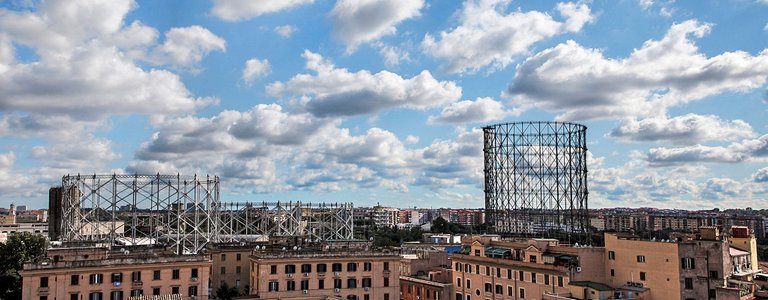
Il gazometro è stato molto utilizzato per scene di film, per esempio appare nell'Accattone di Pasolini e nel film Le fate ignoranti di Ozpetek. Il Gazometro è ormai diventato parte della città e del suo paesaggio urbano, ma negli anni sono stati tanti i progetti, mai portati a termine, per una sua riqualificazione, dalla Città della Scienza alla casa dello studente fino alla Biblioteca centrale di Roma Tre.
Il quartiere Ostiense in questi ultimi anni è diventato un centro urbano carico di vita, grazie anche all'apertura di numerosi locali della movida notturna l'afflusso di persone è smodatamente aumentato.
In questi primi giorni di temperature più calde l'afflusso alla zona è nuovamente risalito, girando per il quartiere è quasi impossibile non imbattersi in qualche visita guidata che passo dopo passo ripercorre tutte le tappe della street art del quartiere.
Di fronte alla gelateria La Romana si trova quello che un tempo era il Magazzino dell’Aeronautica Militare e che invece ora è uno stabile occupato, sulle cui pareti si estende un bellissimo murales di un artista italiano anonimo che si fa chiamare Blu, proprio come il titolo dell’opera dipinta su tre delle quattro facciate dell’edificio.
Come potete notare si tratta di un murales coloratissimo ottenuto con spray e pennello, rappresenta tanti volti colorati, alcuni piuttosto angoscianti, che vogliono attirare l’attenzione sulla piaga sociale dei senza dimora.
L’edificio è ormai occupato da molti anni e al suo interno vivono più di 450 persone. Il progetto è stato realizzato senza autorizzazioni ufficiali e grazie all’autofinanziamento degli abitanti del luogo. Dopo 8 anni dalla sua realizzazione appare un po’ sbiadito, ma sempre di grande effetto.
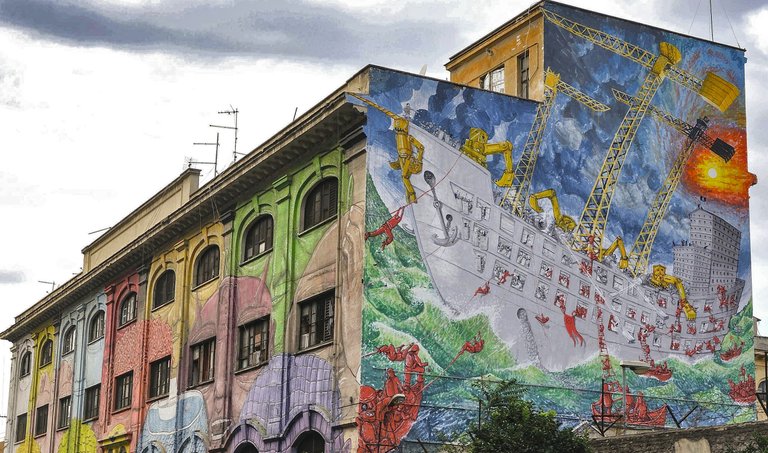
Il tema affrontato da Blu sulla facciata laterale destra è legato ai residenti dell'ex caserma, una nave con gru al posto degli alberi maestri combatte contro un mare in tempesta, composto da colline che riprendono i 7 colli romani, lanciando mattoni, simboleggianti il diritto alla casa. Le finestre dell’edificio diventano invece degli occhi di facce aliene, realizzate tramite banane, cactus, pezzi di puzzle, grattacieli e molto altro.
I primi murales sono comparsi nel 2010 durante l’Outdoor Festival e in questi 11 anni se ne sono aggiunti una quantità assurda lungo quasi ogni via.
Vi consiglio di partire da Via delle Conce al numero 14 troverete da una parte e dall’altra della strada i primi due murales: all’entrata del Rising Love (una delle discoteche note nella zona) quello di Lex&Sten, mentre dall’altra parte della strada Vita e Morte di Herbert Baglione.
Vita e Morte racconta una metafora della società contemporanea in cui galleggiamo isolati, incapaci di colmare le distanze che ci separano. Le figure monocromatiche classiche dell’artista brasiliano, sembrano ricoperte da un mare cupo e denso.
Siamo esseri alla deriva dentro i nostri mari, ognuno con i propri demoni e paure senza accorgersi mai davvero di chi in realtà è li vicino, a pochi passi certe volte.
Se si prosegue nel sottopassaggio di Via delle Conce vi troverete in un micro mondo fatto di poster art e murales non autorizzati, ma non per questo meno interessanti, anzi un tripudio di fantasia vi inonderà gli occhi come foste in un sogno.
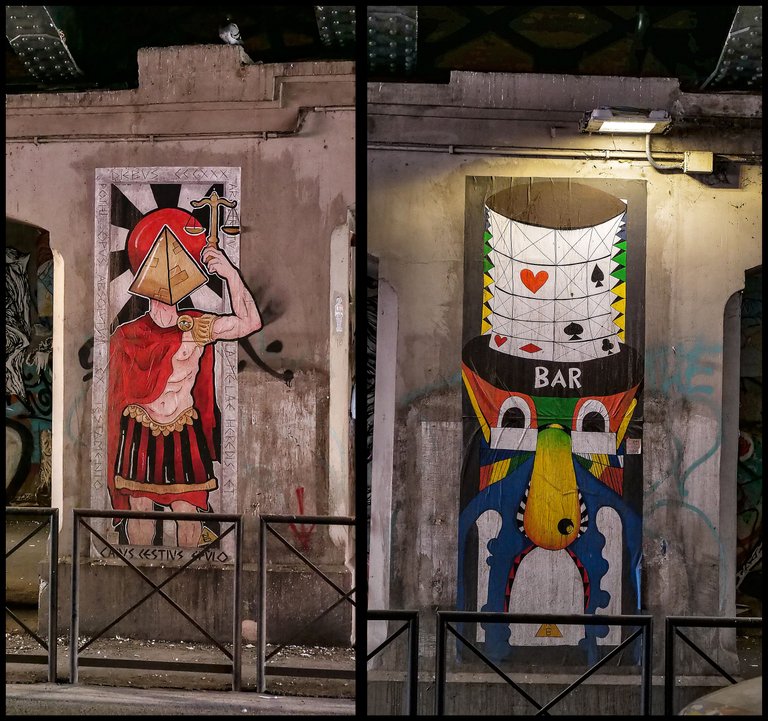
Al civico 122, invece, si trovano le auto incatenate, altra opera di Blu. Si tratta del palazzo Alexis, il centro sociale. Alexis era il nome del ragazzo (Grigoropoulos) ucciso nel quartiere Exarchia di Atene nel 2008.
Un imponente murale sulla facciata della sede romana di Cartoon Network: è l'originale modo con cui il canale celebra il suo 25esimo anniversario. L'opera sul palazzo in via dei Magazzini Generali 18-20, firmata dagli street artist omino71 e Mr.Klevra, vuole valorizzare e promuovere il quartiere.
I due artisti, per l'anniversario del canale, hanno interpretato il tema scelto per l’opera: “Amicizia, incontro e diversità” sviluppando un progetto che presenta un forte richiamo alle opere murali celebrative del passato, dai grandi affreschi rinascimentali ai murales messicani, cercando, allo stesso tempo, di trasporre sul muro modernità, freschezza e allegria.
Sul muro dello storico negozio Cantini invece l’opera Nobody dell’artista americano Alex Void, realizzata nel 2014. Il murales rappresenta il ritratto di una donna di spalle e sul bordo della sua camicia è stato disegnato un cerchio con all’interno una folla di lavoratori, simbolo dei forti valori come quello della famiglia, della devozione al lavoro e del senso civile della comunità.
Nel quartiere Ostiense circa 5 anni fa è partita un’iniziativa chiamata Ostiense District, che serve a valorizzare e promuovere la zona come luogo di aggregazione e visite. Con il progetto nato grazie a un’idea innovativa dell’agenzia di comunicazione Pescerosso e della galleria d’arte contemporanea 999, è stato possibile realizzare e promuovere più di 30 opere nella zona compresa tra Piramide e San Paolo attraverso una mappa dei luoghi di interesse e realizzando campagne di comunicazione, nuovi servizi informativi cartacei e digitali e interventi installativi site specific di cui i primi affidati agli artisti Clemens Behr e Spy.
Gli altri murales si sviluppano tra Via delle Conce (a due passi da Testaccio), Via Acerbi e via del Commercio. Alcuni sono decisamente imponenti, altri più piccoli. Ma sono tutti, proprio tutti, bellissimi. E danno un tocco davvero underground al quartiere. Lo è ancora di più se pensate che il quartiere è pieno di locali, ristoranti, pub e negozi.
Gli stranieri, soprattutto gli americani, si stupiscono di trovare ancora in strada fenomeni di writing, che è nato negli Stati Uniti ma lì sta scomparendo. Il writing è l’arte pittorica che nasce insieme all’hip hop e alla break dance, ovvero il modo in cui le periferie americane manifestano la loro presenza facendo qualcosa per colpire l’occhio e l’immaginazione. Nasce l’esigenza di rifarsi presenti in maniera “violenta” attraverso la bomboletta spray, perché è vietato ovunque scrivere sui muri e quindi bisogna avere un mezzo veloce per scrivere e soprattutto saper scrivere; ciò ci dice anche che i writers non sono degli ignoranti.
Non è vero che non esistono regole, esistono invece regole ben precise: si tratta di laureati o comunque persone che hanno una certa cultura dell’arte, quindi non andrebbero mai a scrivere sui muri di San Pietro. L’altra regola è che non ci si ricopre gli uni con gli altri, con qualche eccezione a questa regola: o per esprimere un dissenso verso quell’opera o per mancanza di spazio.
Tutto ciò che è writing e muralismo è comunicazione, ci sono tantissime altre opere che incantano e comunicano sensazioni e storie di vite vissute, un quartiere che esiste da più di 100 anni, che ha vissuto vicende di ogni genere, che solo a parlarne adesso questo post dovrebbe durare dieci volte tanto.
Personalmente posso darvi come consiglio, sia che siate della zona o che siate molto lontani da Roma, quando vi capiterà di passare da queste parti, lasciate stare i classici monumenti storici, o meglio non metteteli al primo posto nella vostra lista di cose da vedere.
Di arte dentro la capitale ce n'è così tanta in ogni forma immaginabile da occuparvi almeno due vite per godervela tutta, quindi affrettatevi che il tempo stringe!
| Fotocamera | Lumix GH5 | 12-60 mm Leica |
|---|
ENG VERSION
There are millenary works, great historical monuments or the art contained within museums, and then there is urban art.
For tens of years this artistic style has taken hold all over the world, the capital is full of it, the neighborhoods brought to light by these young artists are now many but perhaps the one that stands out most is the Ostiense district. , with all its urban works, built around the famous Gazometro.
"Hunting Pollution" is the title of the ecological mural in the image above, created by Iena Cruz for the Ostiense mural, it is the largest street art work in Europe and uses Airlite technology, a smog-eating paint, a nanotechnology in able, through natural and artificial light, to eliminate pollutants such as nitrogen oxides, benzene, formaldehyde. By transforming the walls into a natural purifier as if it were a forest in two dimensions.
Almost 90 meters high, 1,551 piles driven for a total length of 36 kilometers, 63 meters in diameter. In Rome it is almost impossible not to know him and never have seen him. They called it "Industrial Colosseum" or "Modern Colosseum". For everyone it is the Gasometer, or Gazometer, and was used to store city gas. It is now a huge artifact of industrial archeology.
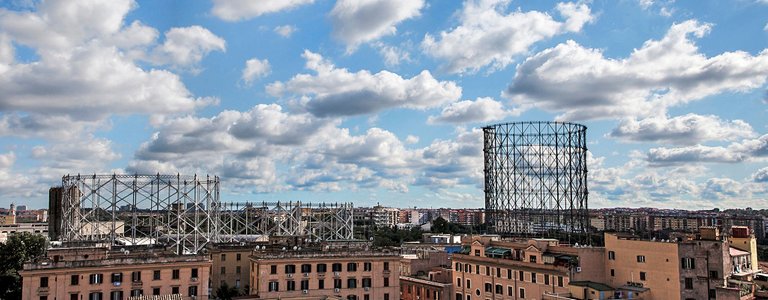
The Gasometer has been widely used for film scenes, for example it appears in Pasolini's Accattone and in Ozpetek's film "The ignorant fairies". The Gazometro has now become part of the city and its urban landscape, but over the years there have been many projects, never completed, for its redevelopment, from the City of Science to the student house up to the Central Library of Roma Tre.
The Ostiense district in recent years has become an urban center full of life, thanks also to the opening of numerous nightlife venues, the influx of people has increased dramatically.
In these first days of warmer temperatures, the influx to the area has risen again, wandering around the neighborhood it is almost impossible not to come across some guided tour that, step by step, retraces all the stages of street art in the neighborhood.
Opposite the La Romana ice cream parlor is what was once the Air Force Warehouse and which is now an occupied building, on whose walls there is a beautiful mural by an anonymous Italian artist who calls himself Blu, just like the title of the work painted on three of the four facades of the building.
As you can see, this is a very colorful mural obtained with spray and brush, it represents many colorful faces, some rather distressing, who want to draw attention to the social plague of the homeless.
The building has now been occupied for many years and more than 450 people live inside. The project was carried out without official authorizations and thanks to the self-financing of the local inhabitants. After 8 years of its creation it appears a little faded, but always of great effect.

The theme addressed by Blu on the right side facade is linked to the residents of the former barracks, a ship with a crane instead of the main masts fights against a stormy sea, made up of hills that reflect the 7 Roman hills, throwing bricks, symbolizing the right at home. The windows of the building instead become the eyes of alien faces, made with bananas, cacti, puzzle pieces, skyscrapers and much more.
The first murals appeared in 2010 during the Outdoor Festival and in these 11 years an absurd amount of them have been added along almost every street.
I recommend starting from Via delle Conce at number 14 you will find on both sides of the street the first two murals: at the entrance of Rising Love (one of the well-known clubs in the area) that of Lex & Sten, while on the other side of the street Life and Death by Herbert Baglione.
Life and Death tells a metaphor of contemporary society in which we float isolated, unable to bridge the distances that separate us. The classic monochromatic figures of the Brazilian artist seem to be covered by a dark and dense sea.
We are beings adrift within our seas, each with their own demons and fears without ever really noticing who is actually nearby, a few steps away sometimes.
If you continue along the Via delle Conce underpass you will find yourself in a micro world made of unauthorized poster art and murals, but no less interesting, indeed a riot of imagination will flood your eyes as if you were in a dream.

At number 122, on the other hand, there are chained cars, another work by Blu. This is the Alexis building, the social center. Alexis was the name of the boy (Grigoropoulos) killed in the Exarchia district of Athens in 2008.
An imposing mural on the facade of Cartoon Network's Roman headquarters: this is the original way in which the canal celebrates its 25th anniversary. The work on the building in via dei Magazzini Generali 18-20, signed by the street artists omino71 and Mr. Klevra, aims to enhance and promote the neighborhood.
The two artists, for the anniversary of the canal, interpreted the theme chosen for the work: "Friendship, meeting and diversity" by developing a project that has a strong reference to the celebratory murals of the past, from large Renaissance frescoes to Mexican murals , trying, at the same time, to transpose modernity, freshness and joy on the wall.
On the wall of the historic Cantini shop instead the Nobody work of the American artist Alex Void, created in 2014. The mural represents the portrait of a woman from behind and on the edge of her shirt a circle was drawn with a crowd of workers, a symbol of strong values such as that of the family, devotion to work and the civic sense of community.
About 5 years ago, an initiative called Ostiense District started in the Ostiense district, which serves to enhance and promote the area as a place for aggregation and visits. With the project born thanks to an innovative idea of the Pescerosso communication agency and the 999 contemporary art gallery, it was possible to create and promote more than 30 works in the area between Piramide and San Paolo through a map of places of interest and creating communication campaigns, new paper and digital information services and site specific installation interventions, the first of which were entrusted to the artists Clemens Behr and Spy.
The other murals develop between Via delle Conce (a stone's throw from Testaccio), Via Acerbi and via del Commercio. Some are very impressive, others smaller. But they are all, absolutely all, beautiful. And they give a truly underground touch to the neighborhood. It is even more so if you think that the neighborhood is full of clubs, restaurants, pubs and shops.
Foreigners, especially Americans, are amazed to find writing phenomena still on the street, which originated in the United States but is disappearing there. Writing is the pictorial art that is born together with hip hop and break dance, or the way in which the American suburbs manifest their presence by doing something to strike the eye and the imagination. The need arises to make oneself present in a "violent" way through the spray can, because it is forbidden to write on the walls everywhere and therefore you must have a fast means of writing and above all being able to write; this also tells us that writers are not ignorant.
It is not true that there are no rules, instead there are very specific rules: they are graduates or in any case people who have a certain culture of art, so they would never write on the walls of St. Peter's. The other rule is that we do not cover each other, with some exceptions to this rule: either to express disagreement with that work or due to lack of space.
All that is writing and muralism is communication, there are many other works that enchant and communicate sensations and stories of lived lives, a neighborhood that has existed for more than 100 years, which has experienced events of all kinds, which only to talk about now this post should last ten times as long.
Personally I can give you as advice, whether you are from the area or if you are very far from Rome, when you happen to pass by these parts, leave the classic historical monuments alone, or rather do not put them at the top of your list of things to see.
There is so much art in the capital in every imaginable form that you can take at least two lives to enjoy it all, so hurry up as time is running out!
| Camera | Lumix GH5 | 12-60 mm Leica |
|---|

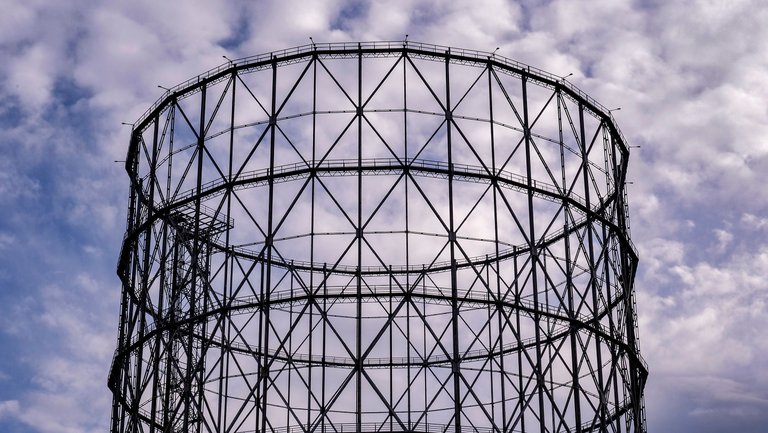
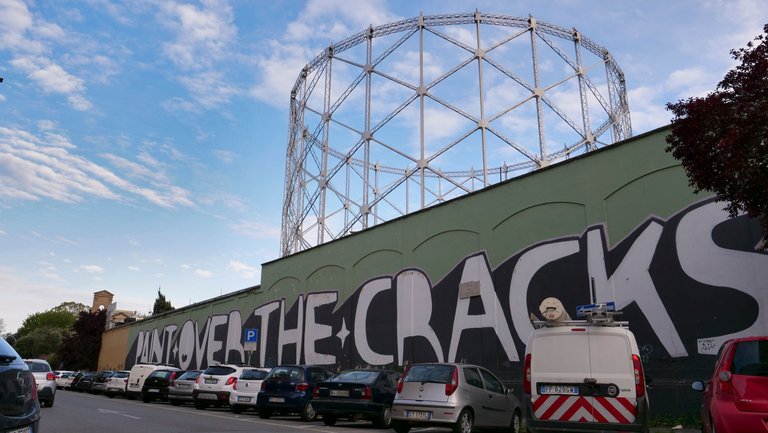
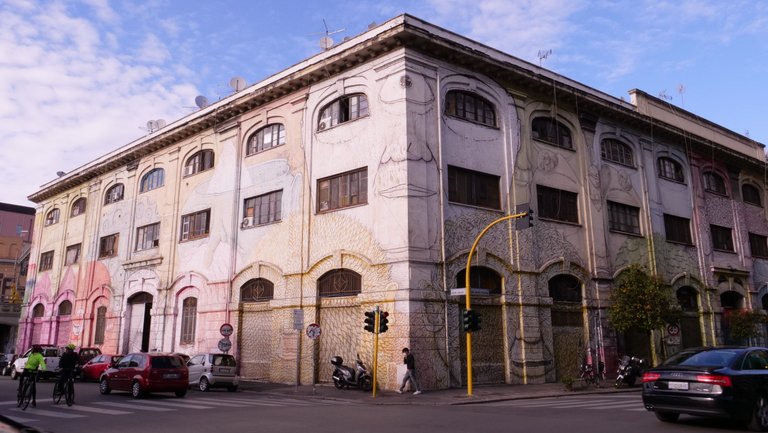
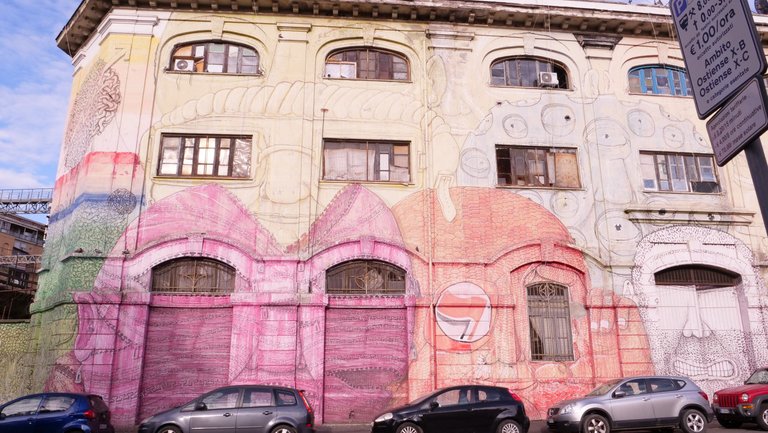
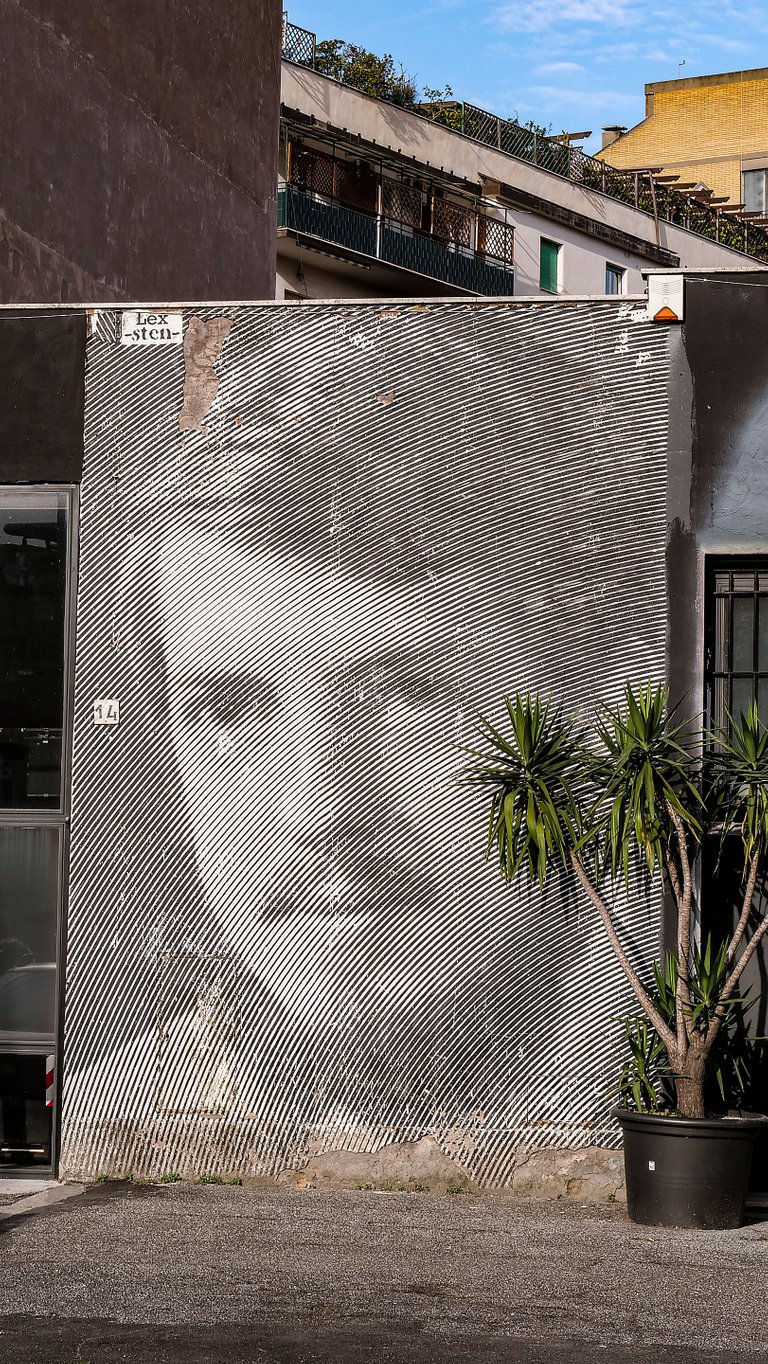
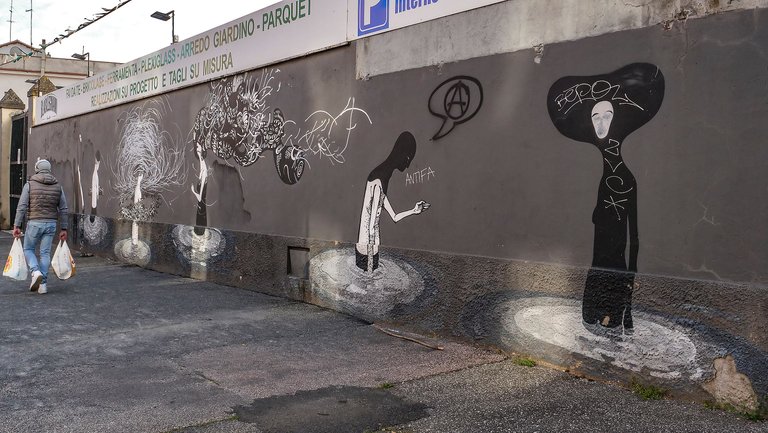
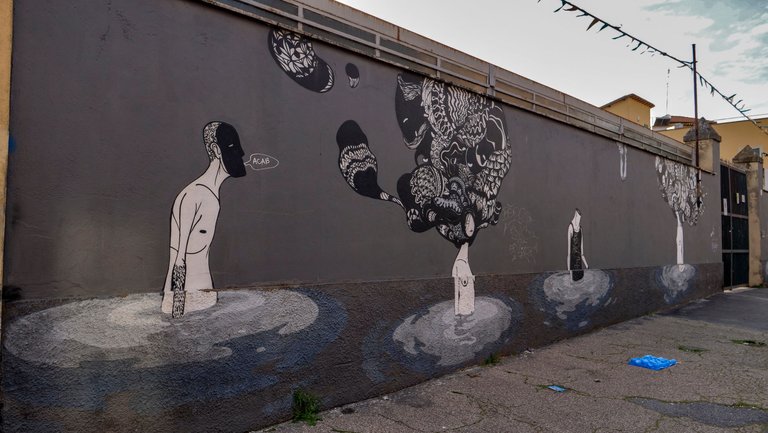
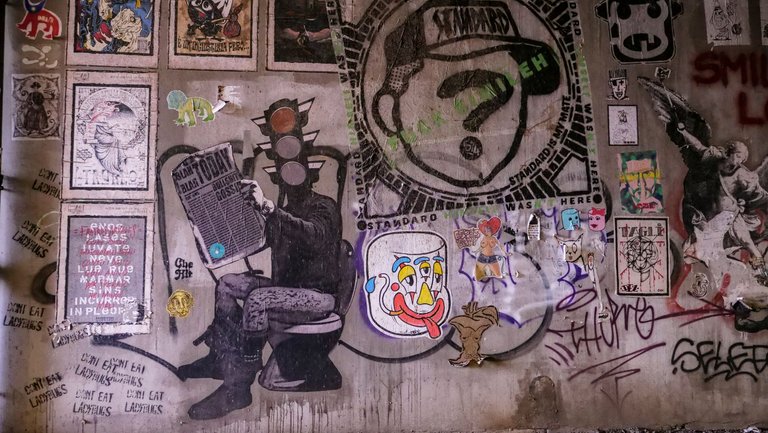
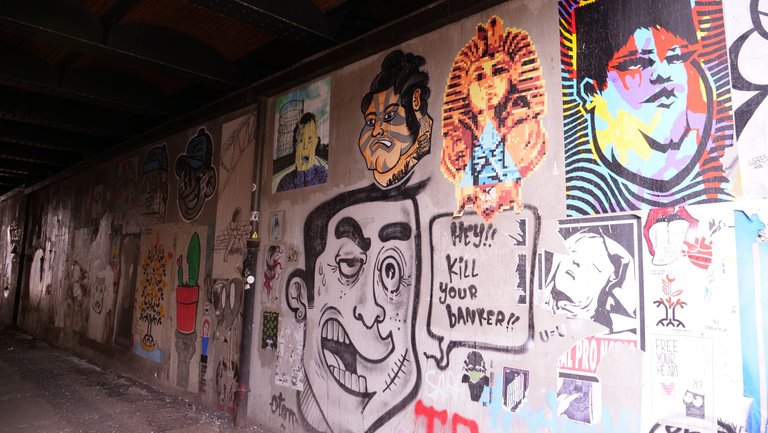
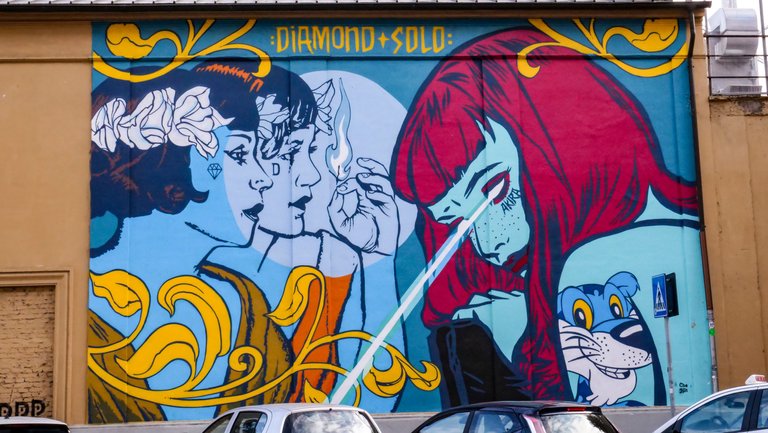

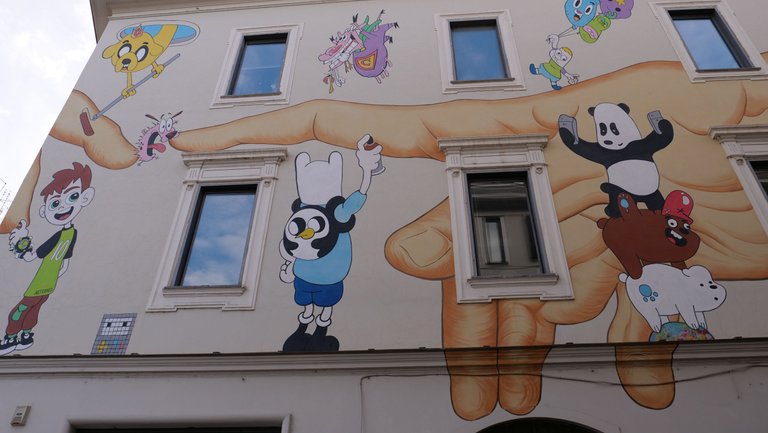
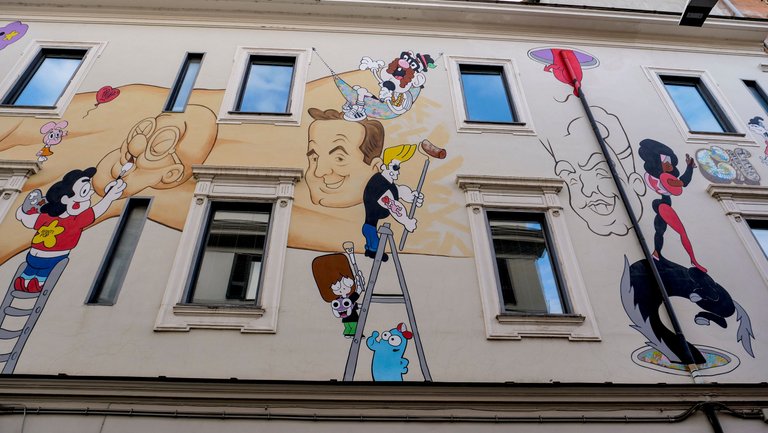
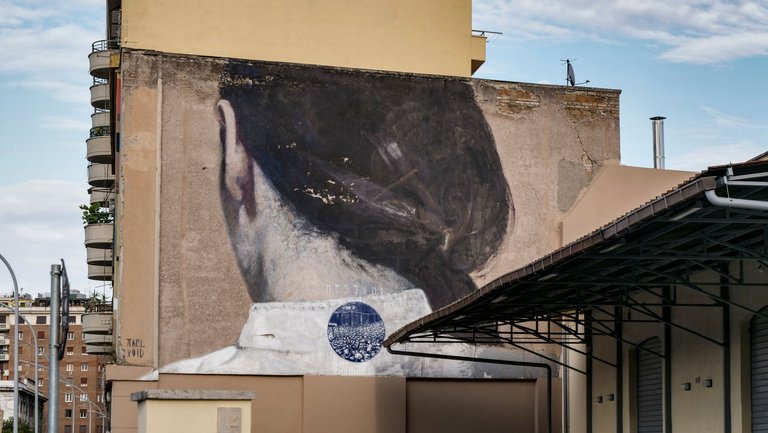
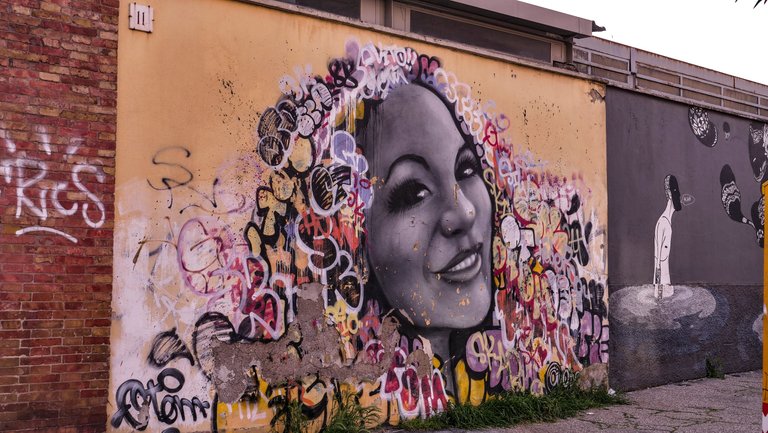
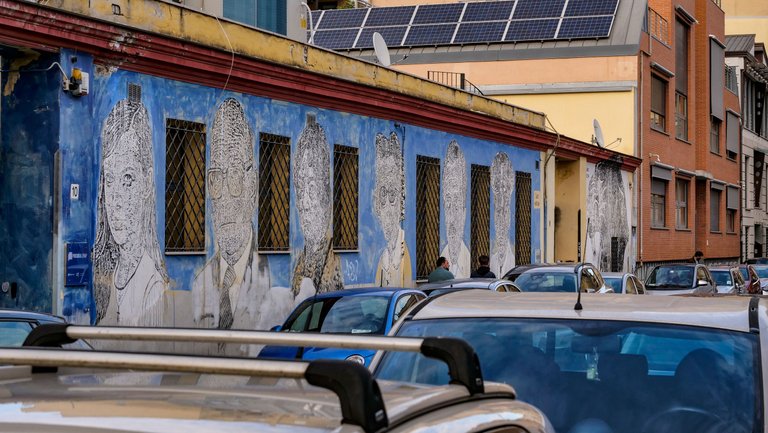
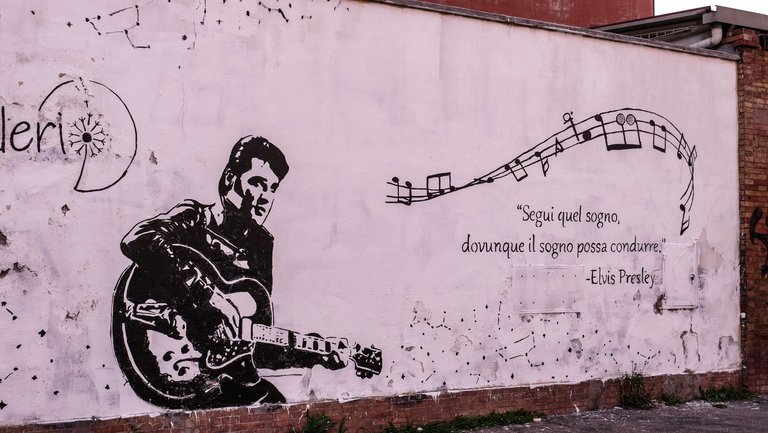
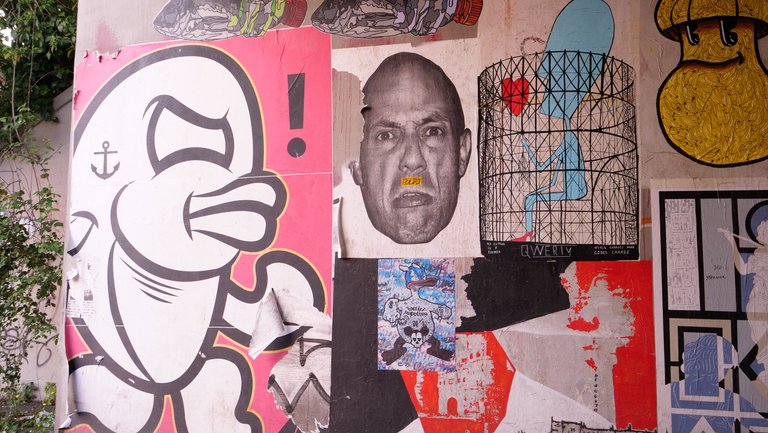
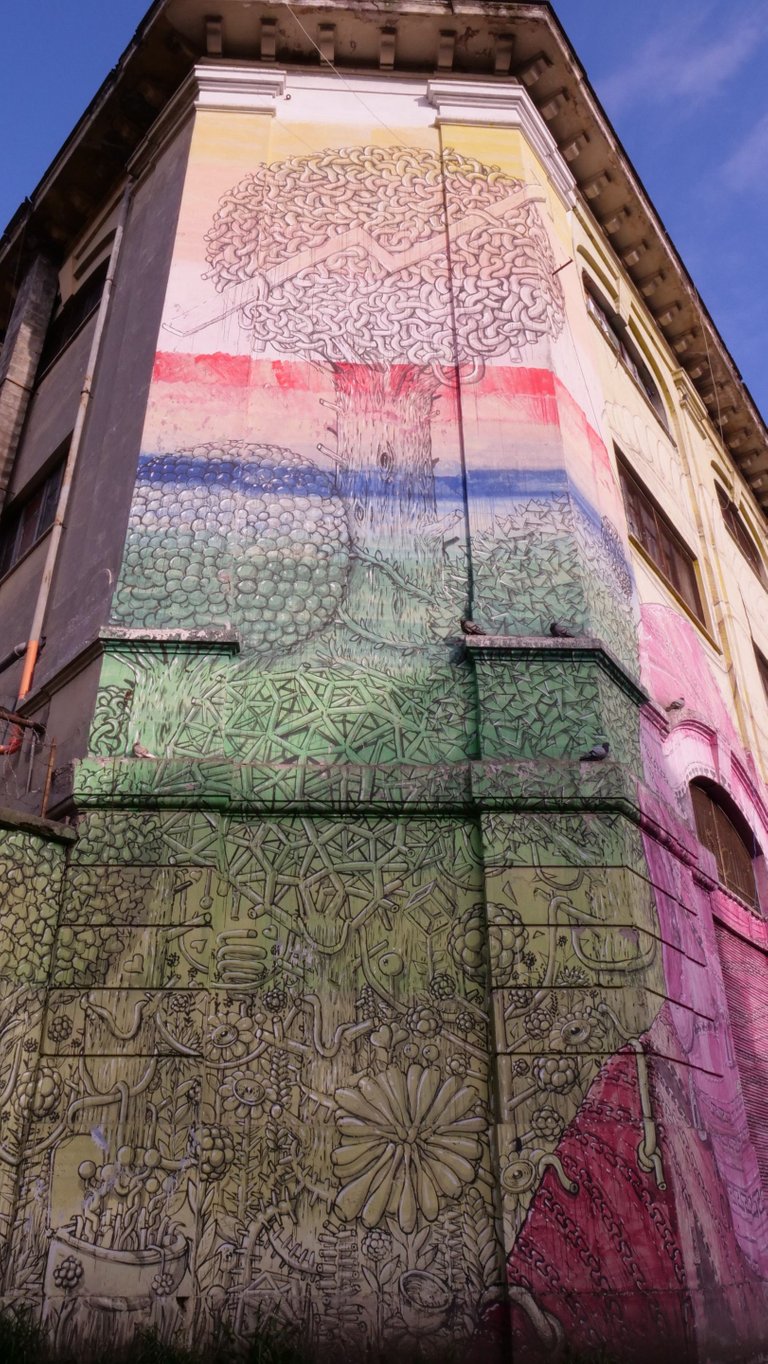
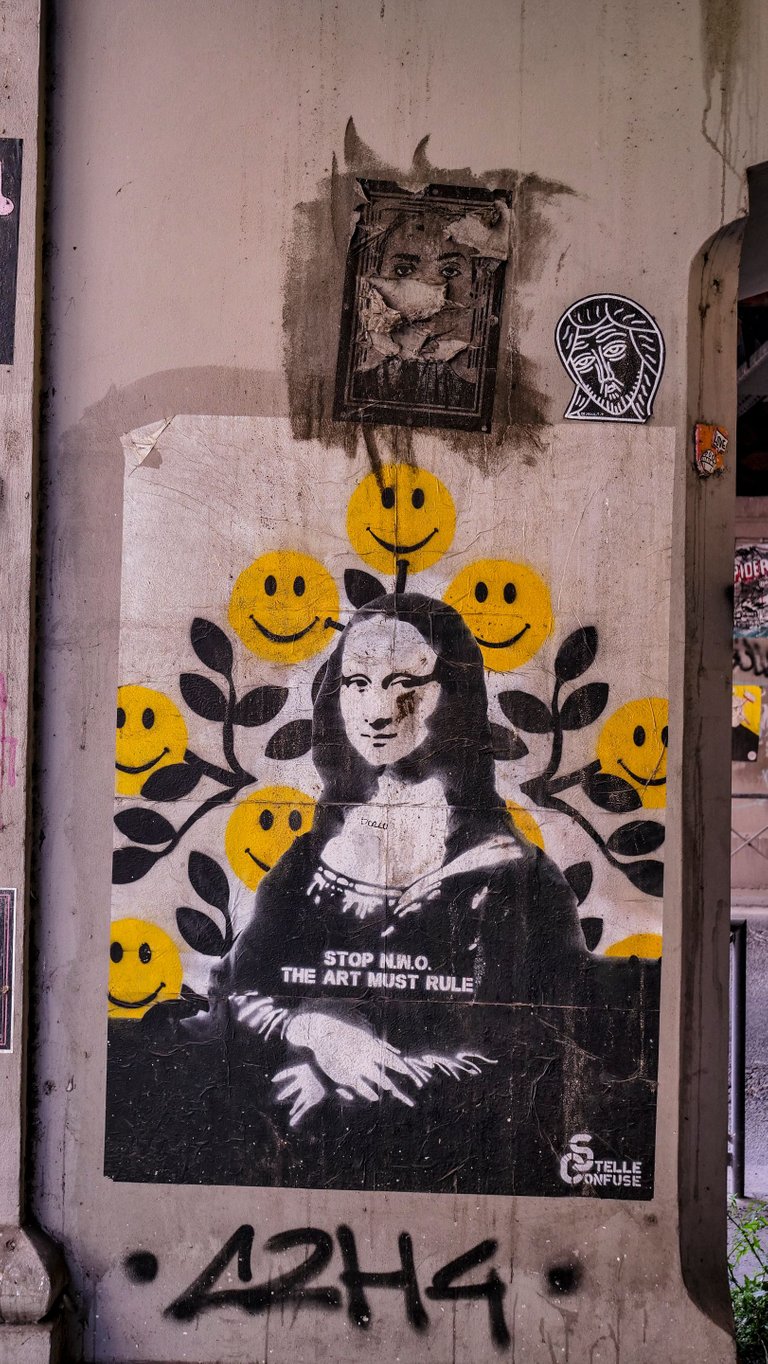
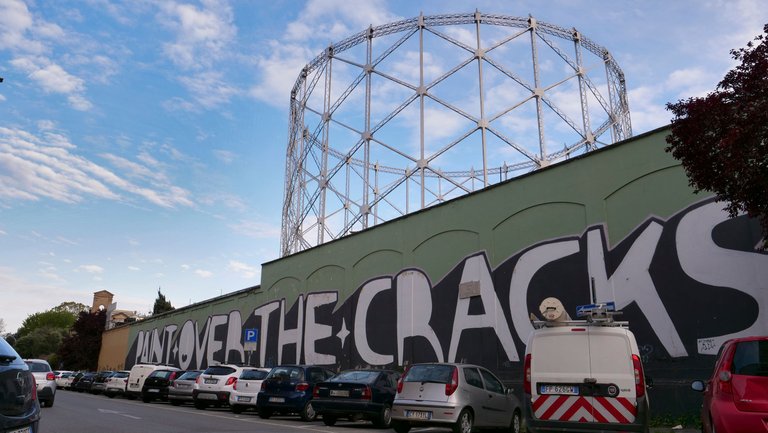
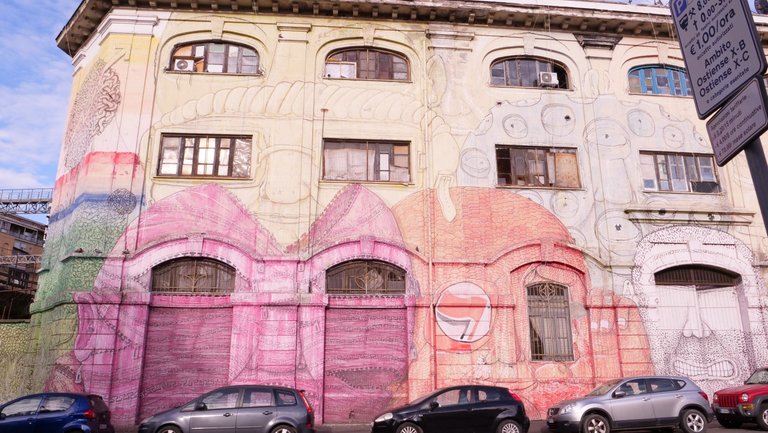
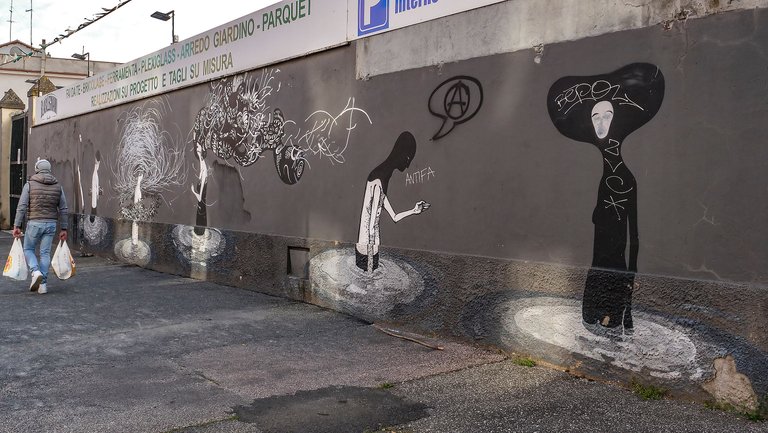
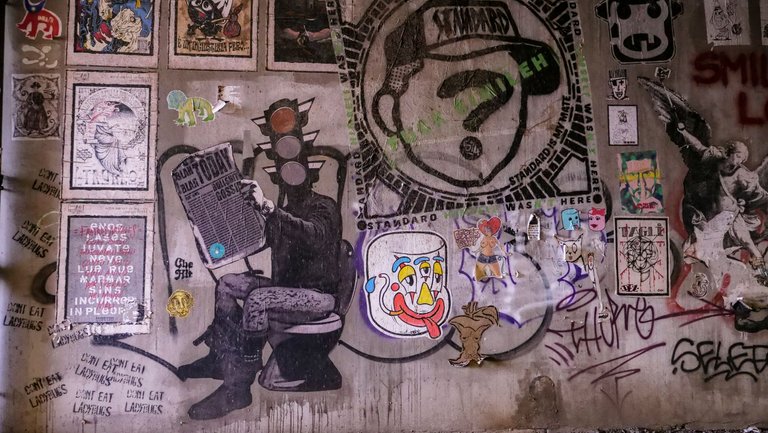
sempre un ottimo lavoro di reportage
!discovery 45
This post was shared and voted inside the discord by the curators team of discovery-it
Join our community! hive-193212
Discovery-it is also a Witness, vote for us here
Delegate to us for passive income. Check our 80% fee-back Program
Molto bello me l'ero perso.
Source of plagiarism 1
Source of plagiarism 2
Source of plagiarism 3
Source of plagiarism 4
Source of plagiarism 5
Source of plagiarism 6
Plagiarism is the copying & pasting of others' work without giving credit to the original author or artist. Plagiarized posts are considered fraud and violate the intellectual property rights of the original creator.
Fraud is discouraged by the community and may result in the account being Blacklisted.